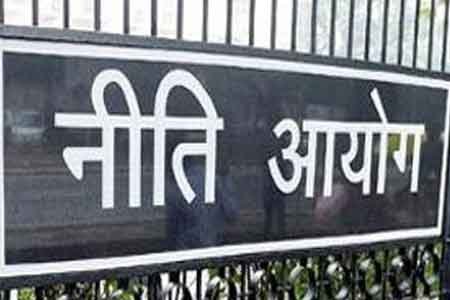India’s growth engine may be showing signs of easing. According to the latest flash data for October 2025, the composite private-sector PMI for India slipped to 59.9, down from 61.0 in September — marking a five-month low. Reuters Although the figure remains well above the 50-point expansion threshold, the moderation signals growing headwinds in demand, especially in services.
What the Numbers Say
The survey, conducted by S&P Global on behalf of HSBC, shows the manufacturing PMI rose slightly to 58.4 (from 57.7 in September) while the services business-activity index dropped to 58.8 (from 60.9). Reuters
Key highlights:
Overall PMI: 59.9 (down from 61.0) — lowest since May. Reuters
Services PMI: 58.8 (down notably) — showing the slowdown was concentrated in services.
Manufacturing PMI: 58.4 (an uptick) — manufacturing improved though still expansionary.
New orders and export demand flagged: new export orders at seven-month low. Reuters
Cost pressures remain: firms increased selling prices despite easing some input costs. Reuters
Why Growth Is Slowing
Several underlying factors point to the moderation:
Services slowdown: With services bearing the brunt, sectors like hospitality, IT, transport and domestic consumption are showing weaker momentum.
Export drag: Indian exporters are facing headwinds — the new export orders sub-index is at its weakest in seven months. Reuters
Competitive & cost pressures: Even as input costs ease slightly, firms are still raising selling prices to protect margins, which could curb demand.
Global trade / tariff factors: External pressures such as U.S. tariffs on Indian goods add uncertainty, which could be restraining business confidence and hiring. Reuters
Implications for India’s Economy
While a PMI of ~60 still signals strong growth, the drop from ~61 suggests moderation that policymakers, businesses and investors should not ignore.
Monetary policy: The Reserve Bank of India (RBI) may interpret this as a signal to remain cautious on rate cuts, given the risk of inflation and external headwinds.
Corporate earnings / business investment: Slowing growth, especially in services and exports, could weigh on corporate revenue growth and investment plans going forward.
Employment: With growth easing, firms may delay hiring or expansion; job creation could soften.
Consumer sentiment: Slowing services and rising prices may dampen consumer spending — a key driver of India’s growth.
Export strategy: India may need to diversify export markets or upgrade value chains given weakness in U.S. demand and rising tariffs.
What Businesses Should Do
For business leaders, investors and stakeholders, the following steps are prudent:
Monitor services sector closely: If the services PMI drop continues, it may signal broader consumption softness.
Manage pricing strategically: With cost pressures and weaker demand, firms need to strike a balance between margin protection and competitiveness.
Focus on exports diversification: Exploring non-U.S. markets and value-added exports could mitigate tariff risk.
Preserve flexibility in hiring/investment: Given the slowing momentum, flexible workforce strategies and phased investment may be safer.
Stay alert to policy signals: Watch RBI announcements, budget/finance ministry updates and global trade developments which may impact demand.
What to Watch Next
Release of full PMI data for October (final composite/manufacturing/services) later in the month.
Q3 GDP data (India) and corporate earnings trend — will the softness translate into wider output numbers?
Export order flows in key sectors (textiles, apparel, engineering goods) and impact of U.S./global tariffs.
RBI monetary policy meeting outcomes and warnings on inflation or growth.
Domestic consumption/festival-season data: whether the slowing momentum in services is temporary or signalling a broader trend.
Conclusion
India’s private-sector growth is still robust by global standards — a PMI close to 60 suggests expansion. But the drop from ~61 signals a notable softening in momentum, especially in the services sector. For businesses and policymakers, this is a timely reminder not to rest on past strength. Careful price management, export strategy recalibration, and policy vigilance are key. As India heads into the festive season, the next few data releases will determine whether this slowdown is a temporary blip — or the start of a more meaningful moderation.
















